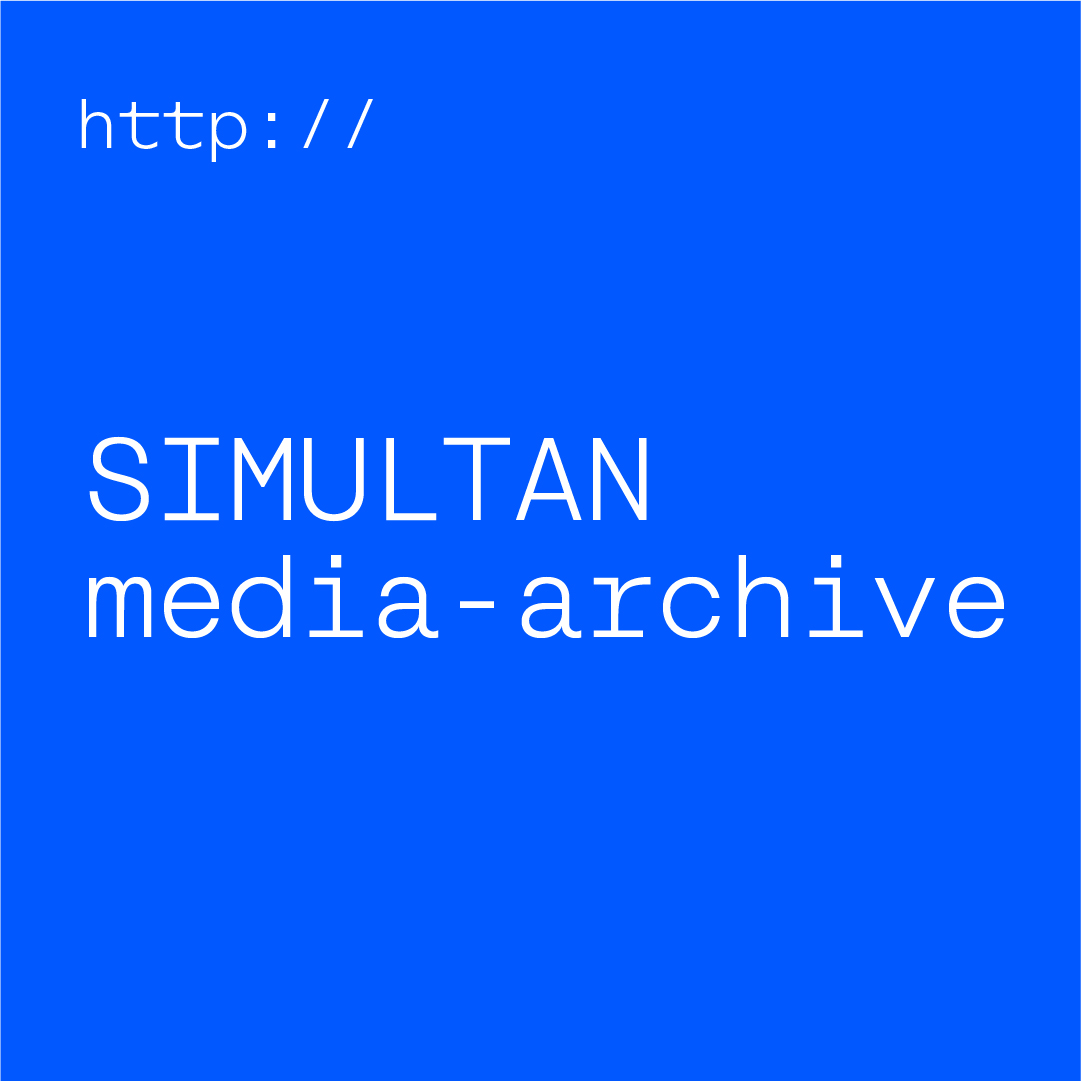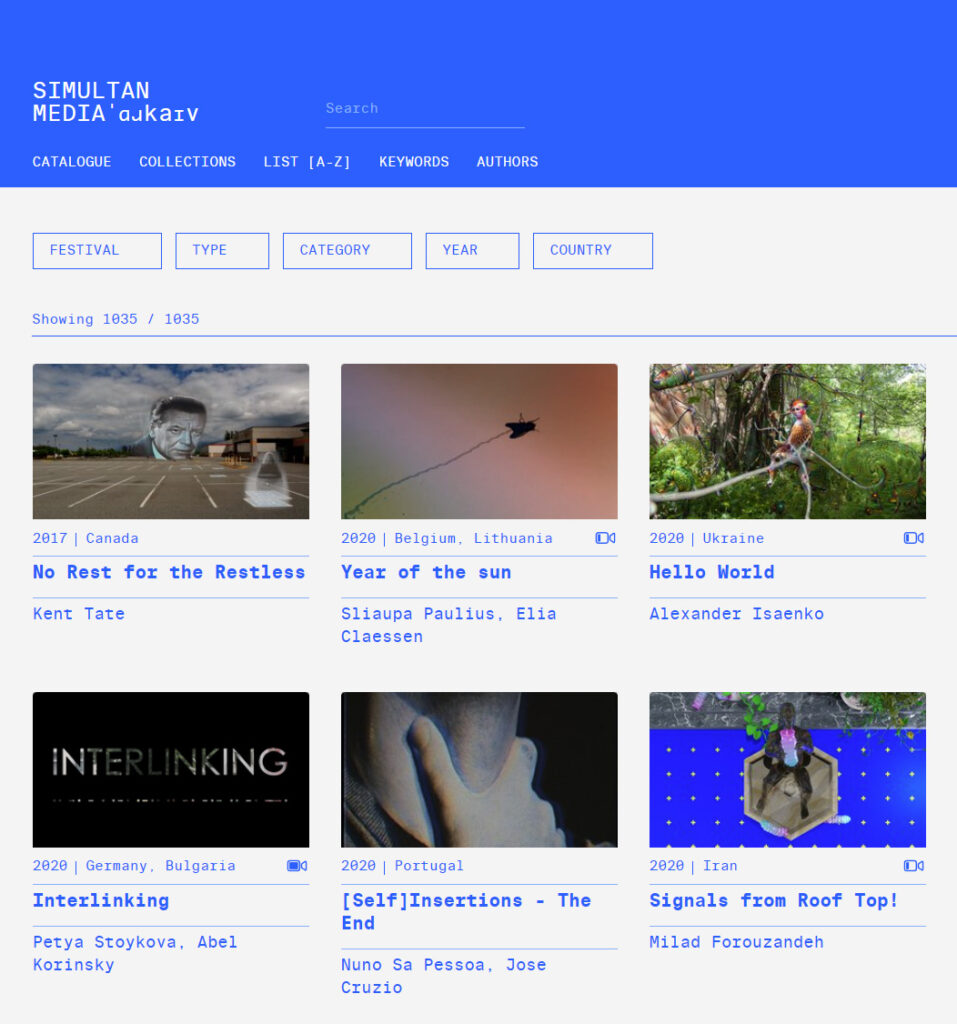
http://archive.simultan.org/
SIMULTAN [media arh-kahyv] is an online database, a digital archive based mainly on the video works presented at the Simultan festival, but also other documentary material (video and audio) from 2005 to the present day. The archive currently contains around 1000 video artworks from artists from over 30 countries.
The archive is constantly growing.
Team – Levente Kozma, Alin Rotariu, Florin Fâra, Raluca Rotariu, Éva Kozma, Luiza Alecsandru, Alina Doros, Alex Iliescu (layout), Costin Bleotu & Andrei Dracea (programing).
The platform was realised with the professional support of C3 – Centre for Culture and Communication from Budapest.

CONTEXT AND MOTIVATION
The term ‘archive’ can define different things: it is a verb, a noun and a preservation strategy. In recent decades, theorists such as Jaques Derrida and Michel Foucault have extended the political and social significance of the archive. As a result, our idea of the archive has shifted from a more traditional notion when we refer to archives (we perceive it as a collection of records and the location in which they are kept) with its neutrality shattered, the idea of the archive is to construct and sustain cultural memory and to essentially choose what is saved for posterity, has become a focal point in cultural studies.
The deconstruction of the relationship between archives and power is reflected in art history, where dominant narratives have been narrowed down on principles of monetary value, ownership, authenticity, originality and uniqueness. Collections held by private or public organisations have tended to dominate and direct discourse towards works that fit these criteria, for example painting and sculpture. Media art that is ephemeral and easily reproducible (that which is not original or unique in the traditional sense) has consequently been largely excluded from these historical collections and from art history. This situation has changed in recent decades, ephemeral installative works, video and digital materials are becoming part of the contemporary art landscape. It is not at all unusual to see media art in many galleries and museums, its development has largely taken place outside these established spaces. Worldwide, small and medium-sized art centres have supported experiments in new media, provided access to new technologies, and presented and distributed media-based art. As a result, many have sizeable documentary collections; collections that tell a much fuller story than could ever be told by the few selected pieces held by major institutions.
Unfortunately, most of these independent collections exist under constant threat of deterioration and inaccessibility. Analogue and digital cassettes are fragile, and hardware and tape formats are out of reach (media companies are constantly creating new formats and cassing the old), for these reasons media art needs repurposing and preservation. Expensive migrations and technical refurbishments make it difficult for many of these organisations to constantly use or provide access to their collections. In the absence of technical infrastructures, data structures become desynchronised, making many of these materials difficult to locate.
Project financed by the Administration of the National Cultural Fund – AFCN and Timiș County Council.